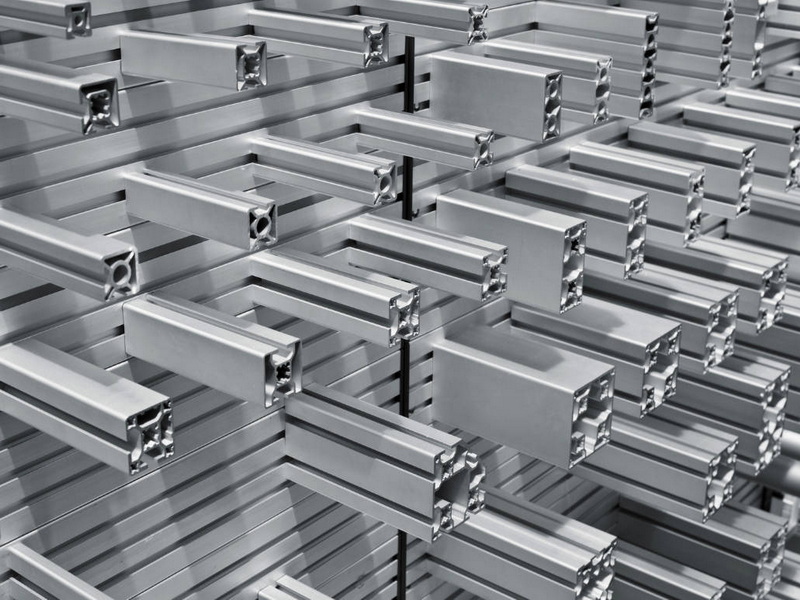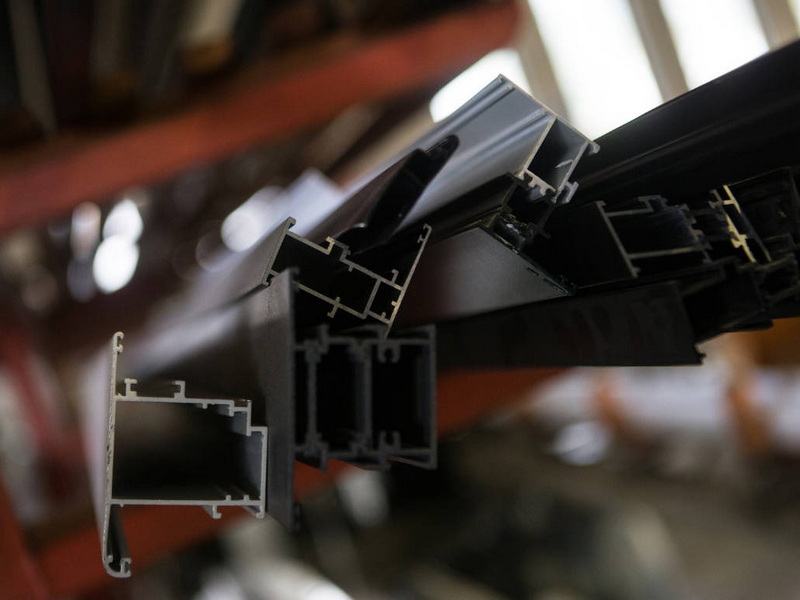English 




Views: 222 Author: Astin Publish Time: 2025-03-19 Origin: Site



Content Menu
● Introduction to Aluminum Profiles for LED Strip Lights
>> Benefits of Using Aluminum Profiles
>> 1. Surface-Mounted Profiles
>> 3. Suspended (Pendant) Profiles
● Step-by-Step Guide to Installing Aluminum Profiles
>> Step 1: Planning Your Installation
>>> a. Measure the Installation Area
>>> b. Select the Right Profile Type
>>> c. Map Power Supply and Wiring Routes
>> Step 2: Preparing Tools and Materials
>>> Essential Tools:
>> Step 3: Cutting the Profile and LED Strip
>>> a. Cutting Aluminum Profiles
>> Step 4: Attaching the LED Strip to the Profile
>> Step 5: Mounting the Profile
>>> a. Surface-Mounted Installation
>> Step 6: Installing Diffusers and End Caps
● Best Practices for Professional Results
>> 1. Creating Continuous Runs
>> 3. Incorrect Diffuser Selection
● Case Study: Kitchen Under-Cabinet Lighting
>> Results
>> 1. Can aluminum profiles be painted?
>> 2. How do I connect multiple LED strips to one profile?
>> 3. Are aluminum profiles necessary for low-power LEDs?
>> 4. What's the maximum length for a single aluminum profile?
>> 5. Can I install aluminum profiles on textured walls?
Installing aluminum profiles for LED strip lights is a straightforward process that enhances the aesthetic appeal, durability, and heat dissipation of your lighting setup. These profiles are versatile and can be used in various applications, from residential to commercial settings. In this article, we will guide you through the steps to efficiently install aluminum profiles for LED strip lights, ensuring a professional finish and optimal performance.

Aluminum profiles, also known as LED channels or extrusions, are designed to house LED strip lights. They provide a sleek and modern look while protecting the LED strips from dust and moisture, which can affect their lifespan. The profiles also help in dissipating heat generated by the LEDs, ensuring they operate within safe temperature limits and maintain their brightness over time.
- Enhanced Aesthetics: Aluminum profiles come in various shapes and sizes, allowing for a customized look that fits different design themes.
- Improved Durability: By protecting the LED strips from environmental factors, these profiles extend the lifespan of the LEDs.
- Efficient Heat Dissipation: Aluminum is an excellent conductor of heat, helping to keep the LEDs cool and maintain their efficiency.
- Easy Installation: Most profiles are designed for easy mounting and can be secured using screws, clips, or adhesive tape.
- Light Diffusion: Many profiles include diffuser covers that soften harsh LED light, creating a uniform glow.
These are ideal for retrofitting LED strips onto existing surfaces like walls, cabinets, or ceilings. They are secured using screws or adhesive tape and are available in straight or corner designs.
Recessed profiles are installed into pre-cut grooves in walls, floors, or furniture. They provide a seamless, built-in look and are popular for modern architectural lighting.
These profiles are hung from ceilings using cables or chains, making them perfect for accent lighting in commercial spaces or kitchens.
Flexible aluminum channels can bend around curved surfaces, such as arches or circular furniture, without compromising structural integrity.
Designed for outdoor or high-moisture environments, these profiles feature silicone seals and corrosion-resistant materials.
Use a laser measure or tape to determine the total length required. Account for corners, curves, and power supply locations.
Choose a profile based on the installation environment (indoor/outdoor), LED strip width, and desired light diffusion. For example:
- Use recessed profiles for under-cabinet lighting.
- Opt for waterproof profiles in bathrooms or outdoor patios.
Plan where to place the power adapter and controller. Ensure wiring routes are hidden for a clean finish.
- Cutting Tools: Miter saw (for precise angle cuts) or hacksaw.
- Drill: For creating pilot holes in hard surfaces.
- Screwdriver Set: For securing mounting brackets.
- Silicone Sealant: To waterproof joints in outdoor installations.
- Aluminum profiles (with diffuser covers and end caps)
- LED strip lights (IP-rated for moisture-prone areas)
- Mounting clips or brackets
- Connectors (for joining multiple profiles or LED strips)
1. Mark the desired length on the profile using a permanent marker.
2. Secure the profile in a vise and cut it with a miter saw (for straight cuts) or a hacksaw (for curved surfaces).
3. Deburr the edges with a file to prevent sharp edges.
1. Cut LED strips only at marked cut points (usually every 1–3 LEDs).
2. Use sharp scissors to avoid damaging copper pads.
1. Clean the profile's channel with isopropyl alcohol to remove dust.
2. Peel off the adhesive backing from the LED strip and press it firmly into the channel.
3. For added security, use double-sided tape or silicone glue.
Pro Tip: Leave a 2–3 cm gap at both ends of the profile to simplify wiring.
1. Attach mounting clips every 20–30 cm along the profile.
2. Drill pilot holes into the surface and secure clips with screws.
3. Snap the profile into the clips.
1. Create a groove in the mounting surface using a router or chisel.
2. Insert the profile into the groove and secure it with construction adhesive.
3. Use trim pieces to cover gaps.
1. Install ceiling anchors for pendant cables.
2. Attach the profile to cables using adjustable hooks.
1. Slide the diffuser cover into the profile's grooves.
2. Secure end caps with silicone adhesive or press-fit connectors.
3. For corner joints, use angled connectors to maintain continuity.
1. Connect LED strips to a power supply using solderless connectors or soldering.
2. Install a dimmer or controller if needed.
3. Test the system for brightness consistency and flicker.
Safety Note: Always disconnect power before handling wires.

- Avoid enclosing profiles in tight spaces without ventilation.
- Use thermally conductive tape to enhance heat transfer between the LED strip and profile.
- Position LED strips centrally within the profile.
- Choose frosted diffusers to eliminate "dotting" effects.
- Apply silicone sealant to end caps and joints in wet environments.
- Use IP67-rated profiles for outdoor installations.
- Dust profiles regularly to prevent overheating.
- Inspect wiring annually for wear or corrosion.
Use corner connectors or L-shaped profiles to navigate 90-degree turns without visible gaps.
Spray-paint aluminum profiles to blend with surrounding surfaces (e.g., wood-grain finishes for cabinets).
Pair LED strips with motion sensors or voice-controlled systems (e.g., Alexa, Google Home) for automated lighting.
- Calculate total wattage: Ensure the power supply can handle the combined load of all LED strips.
- Example: A 12V/5A power supply supports up to 60W (12V × 5A).
- Surfaces must be clean and dry. For heavy profiles, combine adhesive tape with mechanical fasteners.
- Clear diffusers work best for task lighting; frosted diffusers are ideal for ambient lighting.
- Leave a 1–2 mm gap between profiles in high-temperature environments to accommodate thermal expansion.
1. Buy profiles in bulk for large projects.
2. Use aluminum channels without diffusers for utility spaces (e.g., garages).
3. Repurpose old profiles by replacing damaged diffusers.
- Location: Residential kitchen
- Profile Type: Recessed aluminum channel with frosted diffuser
- LED Type: 24V RGBW strip
- Installation Time: 3 hours
- 40% reduction in energy costs compared to halogen lighting.
- Improved task lighting for food preparation areas.
- Enhanced ambiance with customizable colors.
Installing aluminum profiles for LED strip lights is a cost-effective way to achieve professional-grade lighting with minimal effort. By selecting the right profile type, following precise installation steps, and adhering to best practices, you can create durable, energy-efficient lighting solutions for any space. Whether you're enhancing a kitchen, highlighting artwork, or illuminating a retail display, aluminum profiles ensure your LED strips perform optimally while maintaining a polished appearance.

Yes, use high-temperature spray paint designed for metal surfaces. Avoid painting the interior to maintain heat dissipation efficiency.
Use solderless connectors or soldering to link strips end-to-end. Ensure the total length doesn't exceed the power supply's capacity.
While optional, they still provide protection and improve light diffusion. For high-power LEDs (>10W/m), profiles are essential for heat management.
Standard extruded profiles are available up to 2 meters. For longer runs, join multiple profiles using connectors.
Yes, but surface-mounted profiles with heavy-duty adhesive or screws are recommended for uneven surfaces.
[1] https://www.vst-lighting.com/installing-aluminium-profiles-for-led-tape/
[2] https://www.topledprofile.com/blog/a-step-by-step-guide-on-how-to-install-led-aluminum-profiles-230810c8-04eb-4951-a464-467a158c05d8
[3] https://www.topledprofile.com/blog/how-to-install-led-aluminum-profiles-a-step-by-step-guide
[4] https://kaytai.com/zh/how-to-use-led-aluminum-profiles-step-by-step/
[5] https://kaytai.com/how-to-install-led-aluminum-profiles-for-linear-lights/
[6] https://www.linkedin.com/pulse/comprehensive-guide-using-aluminum-profiles-led-strips-mylikeled-5a8lc
[7] https://stavianmetal.com/en/the-most-accurate-method-for-installing-aluminum-profile-led-lights/
[8] https://www.topledprofile.com/blog/the-step-by-step-guide-how-to-install-led-strips-in-aluminum-profiles
[9] https://www.topledprofile.com/blog/best-practices-for-installing-led-aluminum-profiles
[10] https://profiledecor.com/install-led-strip-lights/
[11] https://beslagdesign.com/en/inspiration-2/2023/12/04/installation-and-mounting-of-aluminum-profiles-with-led-strips
[12] https://mardomdecor.com/en/blog/led-profile-in-the-wall-step-by-step-installation/
Top Aluminum Furnitures Manufacturers and Suppliers in Czech Republic
Top Aluminum Furnitures Manufacturers and Suppliers in Poland
Top Aluminum Furnitures Manufacturers and Suppliers in Belgium
Top Aluminum Furnitures Manufacturers and Suppliers in Finland
Top Aluminum Furnitures Manufacturers and Suppliers in Denmark
Top Aluminum Furnitures Manufacturers and Suppliers in Greece
Top Aluminum Furnitures Manufacturers and Suppliers in Portugal
Top Aluminum Furnitures Manufacturers and Suppliers in Austria
Top Aluminum Furnitures Manufacturers and Suppliers in Norway
Top Aluminum Furnitures Manufacturers and Suppliers in Sweden
